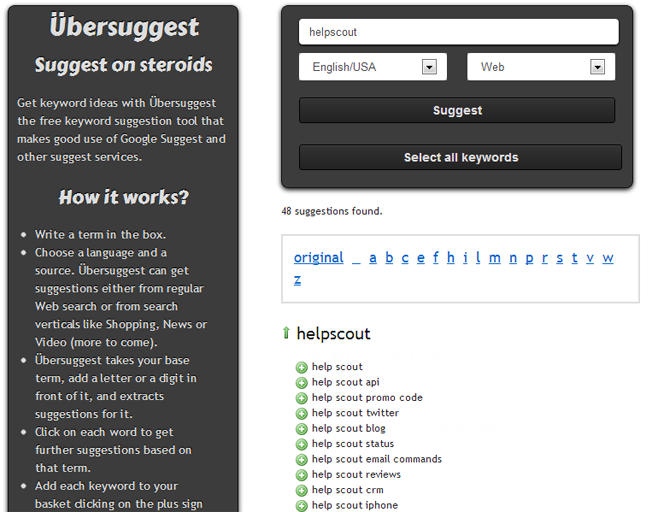There?s a fundamental shift going on in how people research and buy goods and services ? and SEOs haven?t kept up. Too often SEOs focus solely on driving traffic, instead of influencing the buying process and driving revenue.
Now customers don?t just use search engines to find websites to buy things ? they use search engines throughout the whole consideration and purchase process:
- For Awareness ? with categorical & problem-based search queries like ?Link Building Tools? or ?Measure Social Media ROI?
- For Research and Product Evaluation ? with queries about specific products and problems, like ?ERP for Manufacturing?, or ?Facebook Analytics for Retailers?
- For Final Product Selection and Reviews ? with queries about specific brands, reviews, and comparisons, like ?Oracle vs SAP?, or ?Team Treehouse Reviews?.
If you don?t appear favorably in these end queries, then you can lose a sale you?d otherwise won. After all of your marketing money is spent building a brand, building awareness, generating demand, and getting found, it?s painful to lose a deal before it even starts.
Today I?ll show you how to address those ?end of funnel? queries, and not only capture all of your own hard-won demand, but maybe some of your competitor?s too.
Are You Losing Customers Before They Ever Consider You?
Lots of queries are from potential customers at the middle and bottom of the funnel. And while many marketers are focused on driving traffic and building or buying awareness, it?s possible your online reputation is turning off these customers before they ever speak with you.
Your potential customers are search for Bottom of the Funnel phrases like:
- YourService Reviews
- YourService vs CompetitorService
- YourService competitors
- YourService alternative
- YourService YourPartner
To use KISSmetrics as an example, I see queries like:
- KISSmetrics vs Google Analytics
- KISSmetrics Review
- KISSmetrics Geckoboard
To unpack these queries, these represent customer questions like:
- How does KISSmetrics compare to Google Analytics? Can they be used together? Does KISSmetrics give me insight I can?t get with through my Google Analytics implementation?
- What do other people think of KISSmetrics? Is it a great product?
- How does KISSmetrics work with Geckoboard? Can I use them together?
The answers potential customers find to these questions using search will either send them off to call a sales rep or complete an online purchase, or make them think the product doesn?t meet their needs, and end their purchase process.
For example, companies can create content that captures these queries. FreshDesk has created pages highlighting how they compare to their biggest competitors, ZenDesk and Desk.com:


Video hosting company Vzaar has created a page to rank for the phrase ?Wistia Alternative?

You can create feature comparison matrixes, or videos that show product operations side-by-side. Alternatively, if your product integrates with other products in the space, create pages for each of the integrations ? showing what they look like and how they deliver value.
Capturing these mid-funnel and deep-funnel queries and showing them the right message is important ? and as with many deeper-funnel marketing activities, they can drive significant ROI if you have robust demand generation and inbound marketing activities.
How to Find These Deep-Funnel Queries
Many of these queries don?t appear in your web analytics records ? because they?re either answered off-site or they are obfuscated (not provided). So you have to use other methods to find the information you?re looking for.
Ubersuggest
One tool you can use to source these queries is UberSuggest. UberSuggest looks at Google Suggest and gathers all of the auto-suggested queries into a list, which you can perform further searches on or export as a .CSV.

The best way to start using UberSuggest to gather your late-funnel queries is to enter your brand name and gather all of the results, and identify queries that seem to be pre-purchase. (You?ll also find some queries related to your content marketing, your funding situation, jobs, and other non-prospect searches.)
Soovle
Soovle is a very similar tool to UberSuggest, except it looks at more data sources than Google ? like YouTube, Bing, Wikipedia, Yahoo, and Amazon. You can use it similarly to Ubersuggest.

Optimizing for Deep Funnel Queries
Now that you have your queries, you can figure out how to address them.
When I think about optimizing for these queries, I look for three criteria:
- The page ranks well for the query (position 1-3)
- The page contains the correct message that shows my product in a positive but realistic light in regard to the query (creating false expectations just leads to trouble down the road, and ultimately lost revenue and a bad brand)
- The content is deemed credible and trusted by the searcher
To meet these criteria, there?s a couple of different approaches:
Create a Page on Your Site
Some queries, like queries about partner interoperability, tutorials, and the like, can be well-addressed by creating a page on your own site, showing the integration.
This is usually pretty easy ? especially if you have a CMS ? and can be done quickly. You can also control the message on this page, and rank for the term quickly.
However, potential customers won?t trust claims you make about your own products on your own website, and won?t believe any sort of competitive comparison.
I also recommend everyone creates a page on their site called ?[brand] Reviews?, and add their favorite reviews of their product. This both creates a great result for reviews-related queries, and gives your supporters and evangelists a little link love.
Ask Someone Else to Create a Page on Their Site
The other approach is asking someone in your customer community to write an article on their site. This approach is particularly well-suited to product comparisons.
The major advantage these comparisons have is their credibility ? potential customers will trust third parties to accurately compare products. I recommend you ask reviewers to be as honest as possible, and highlight the weaknesses of your product as well as the high points, as honest reviews that include specific negatives can actually increase sales.
However, you?re taking a risk ? you might get an unflattering review, that site might change over time, or the site owner might stop maintaining their site, or any number of other things may happen.
You can also address some of these comparisons personally, thru answering questions on sites like Quora. This thread comparing SEO tools is a great example, where founders of the respective companies have chimed in and discussed the pros and cons of their products.
As Search Becomes Central to Our Decision Making Process, Your Strategy Has to Evolve
In the past, there was less content on the internet, and consumer buying habits didn?t include finding reviews for just about everything. Now, online reviews and social media have replaced industry analysts and other decision making aids, and modern customers (of both b2b and b2c businesses) rely on online reviews and sentiment to make decisions. Ensuring your company?s best foot is put forward at every step of the purchase path is necessary for customers to even talk to you. Optimize for the bottom of the funnel ? so you don?t lose customers without knowing it.
About the Author ? Matt Gratt is a marketer at BuzzStream, the CRM for content marketers and SEOs. You can read his writing on the BuzzStream blog or follow him on Twitter @MattGratt.
http://feeds.feedburner.com/KISSmetrics
record store day jennie garth space needle nashville predators king arthur king arthur there will be blood
No comments:
Post a Comment
Note: Only a member of this blog may post a comment.